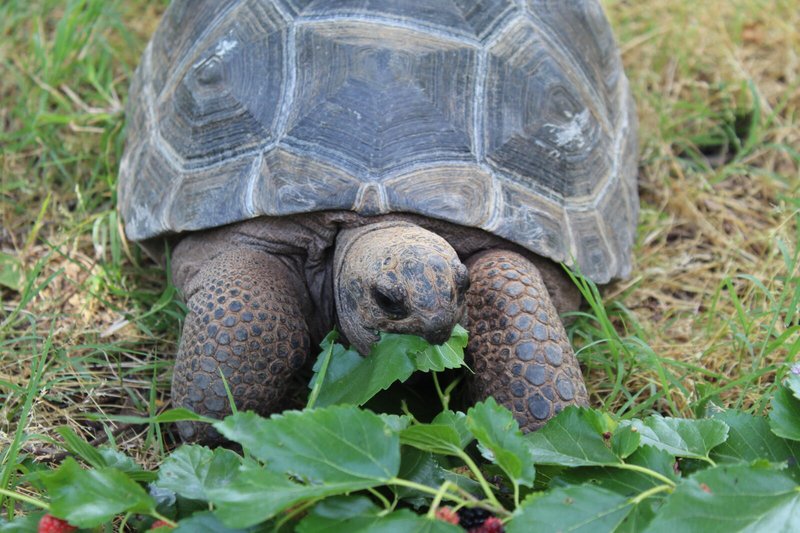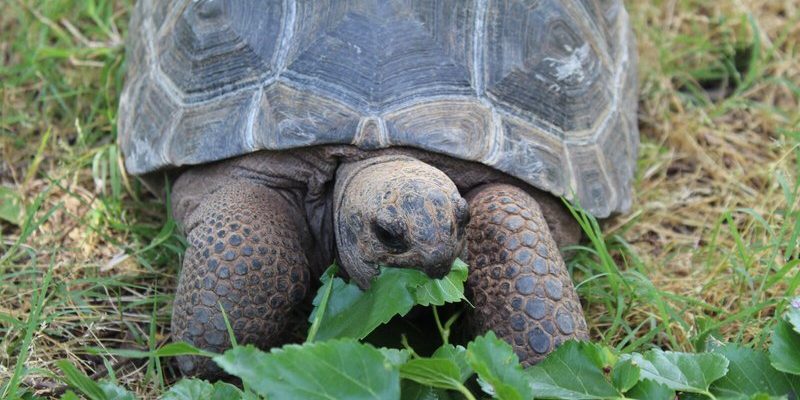
Honestly, understanding what these magnificent reptiles eat and how they “hunt” offers a glimpse into their way of life and survival strategies. You might be surprised at how their diet reflects their environment, and how their foraging methods work perfectly with their slow and steady nature. So, let’s dive into the world of the Aldabra giant tortoise and explore its culinary habits!
What Is the Aldabra Giant Tortoise’s Diet Like?
The Aldabra giant tortoise primarily follows a herbivorous diet, which means it dines on plants. More specifically, they feast on a variety of grasses, leaves, fruits, and even flowers. This isn’t just a random selection; their diet is perfectly adapted to the environment of the Aldabra Atoll.
One of their favorite foods includes the tall grasses found in their habitat. You wouldn’t believe how much these tortoises enjoy munching on them! They also munch on succulent plants, which provide essential moisture, especially in the dry season when water can be scarce. The tortoises actively seek out leaves and fruits that grow on trees and shrubs, too, making their diet diverse and nutritious.
Additionally, their eating habits can be influenced by the seasons. In the wet season, they might enjoy a wider range of plant life, while in drier months, they’ll rely more on what’s available, which often includes more fibrous and tougher plant materials. This adaptability is one of the tortoise’s strengths!
How Does the Aldabra Giant Tortoise Hunt for Food?
You might be wondering how a tortoise, known for its slow pace, manages to find its meals. The term “hunt” might be a bit misleading, as these tortoises don’t chase after their food. Instead, they employ a more laid-back approach that suits their calm demeanor.
These tortoises use their keen sense of smell and vision to locate food. Imagine strolling through a garden, casually sniffing the air for your favorite flower. That’s similar to how the Aldabra tortoise searches for tasty plants. They carefully survey their surroundings, using their senses to guide them toward edible plants.
Once they spot a meal, their powerful jaws come into play. With strong beaks, they can easily snap off leaves and bite through tough plant fibers. It’s a rather effective method for them, turning even the most fibrous foods into a delightful snack!
The Role of Habitat in Their Feeding Behavior
The Aldabra Atoll, with its diverse ecosystem, plays a big part in what these tortoises eat and how they find food. This unique habitat is rich in various plants, which means tortoises have plenty of options.
In their coastal home, they often find salt-tolerant vegetation, which is essential given the island’s proximity to the ocean. Plants like mangrove leaves and sea grasses are staples in their diet. Moreover, during mating season or when the tortoises are more active, they may explore areas they usually avoid, extending their foraging range and opportunities.
Interestingly, when food is abundant, tortoises can exhibit a sort of “social feeding.” They might gather in groups near a rich food source, sharing the bounty while still maintaining their individual feeding patterns. This cooperation allows them to efficiently consume available resources without competing against each other.
How Much Do Aldabra Giant Tortoises Eat?
Now that you know what they eat and how they hunt, you might be curious about just how much food these massive tortoises consume. Surprisingly, adult Aldabra giant tortoises can eat a staggering amount of food. It’s not unusual for them to consume over 80 pounds of vegetation in a week!
These tortoises have a slow metabolism, which means they process food at a much slower rate than many other animals. Because of this, they eat regularly throughout the day, taking their time to enjoy their meals. If you were to watch them, you’d see them grazing for hours, leisurely enjoying the buffet of nature around them.
Keep in mind, though, that their feeding isn’t just about quantity; it’s also about quality. They tend to pick the freshest and most nutritious plants. This selective eating is crucial for their health.
The Impact of Their Feeding on the Ecosystem
The Aldabra giant tortoise doesn’t just eat plants; it plays a significant role in its ecosystem. By munching on vegetation, these tortoises help to maintain the balance of their environment.
For instance, as they feed, they can prune back overgrown areas, allowing younger plants to thrive. This grazing actually promotes biodiversity by helping various plant species flourish. Plus, their droppings are a natural fertilizer, helping to enrich the soil and support the growth of new plants.
In this way, the Aldabra tortoise acts as a gardener of sorts, contributing to the health of their habitat. When they’re thriving, so is the entire ecosystem around them!
Challenges to Their Feeding Habits
While the Aldabra giant tortoise is well-adapted to its environment, it faces various challenges that can impact its diet and feeding behavior. Climate change is a significant concern; rising sea levels and changing weather patterns affect the vegetation available on the Aldabra Atoll.
Additionally, human activities, such as the introduction of invasive species or habitat destruction, threaten their food sources. These factors can make it harder for the tortoises to find the lush grasses and plants they rely on for survival.
It’s important to note that conservation efforts are underway to protect these magnificent creatures and their habitat. By understanding their feeding habits and the challenges they face, we can better support initiatives aimed at preserving the Aldabra giant tortoise’s home and ensuring they continue to thrive in their unique ecosystem.
The journey through the diet of the Aldabra giant tortoise reveals a fascinating world where slow and steady truly wins the race. Their herbivorous diet, keen foraging methods, and the impact they have on their environment paint a picture of survival and balance in nature.
By learning about what these tortoises eat and how they navigate their habitat, we gain a deeper appreciation for their role in the ecosystem and the challenges they face. So, the next time you encounter a tortoise, remember that beneath that calm exterior lies a creature with an intricate daily routine centered around food, survival, and the delicate dance of nature.

